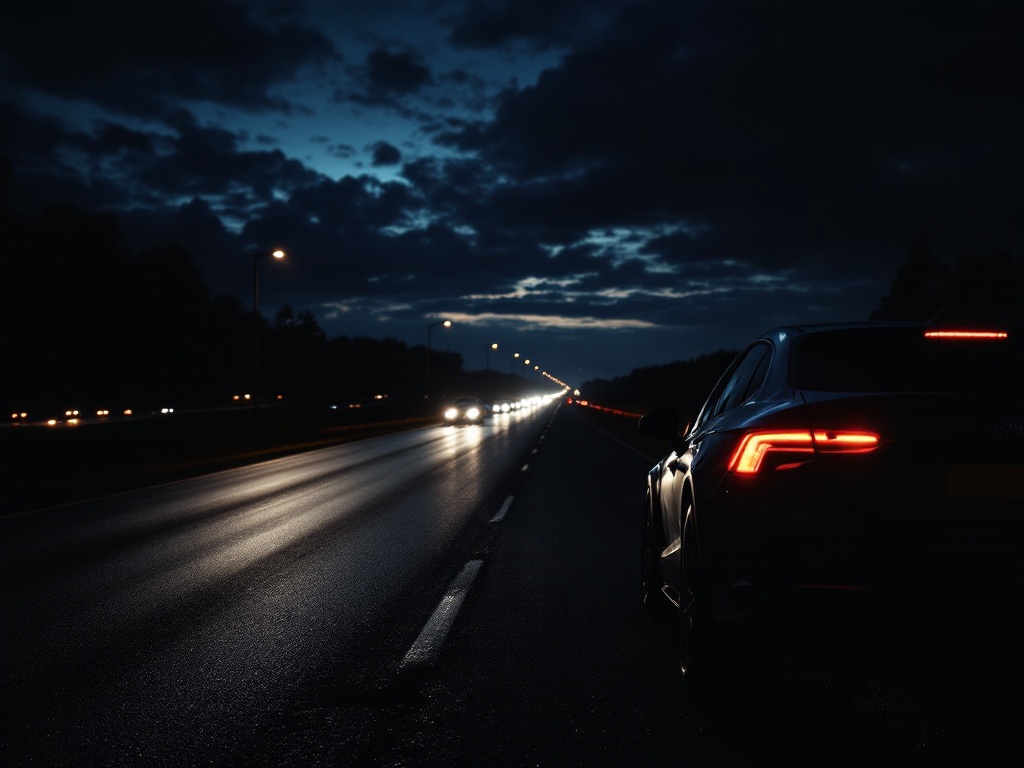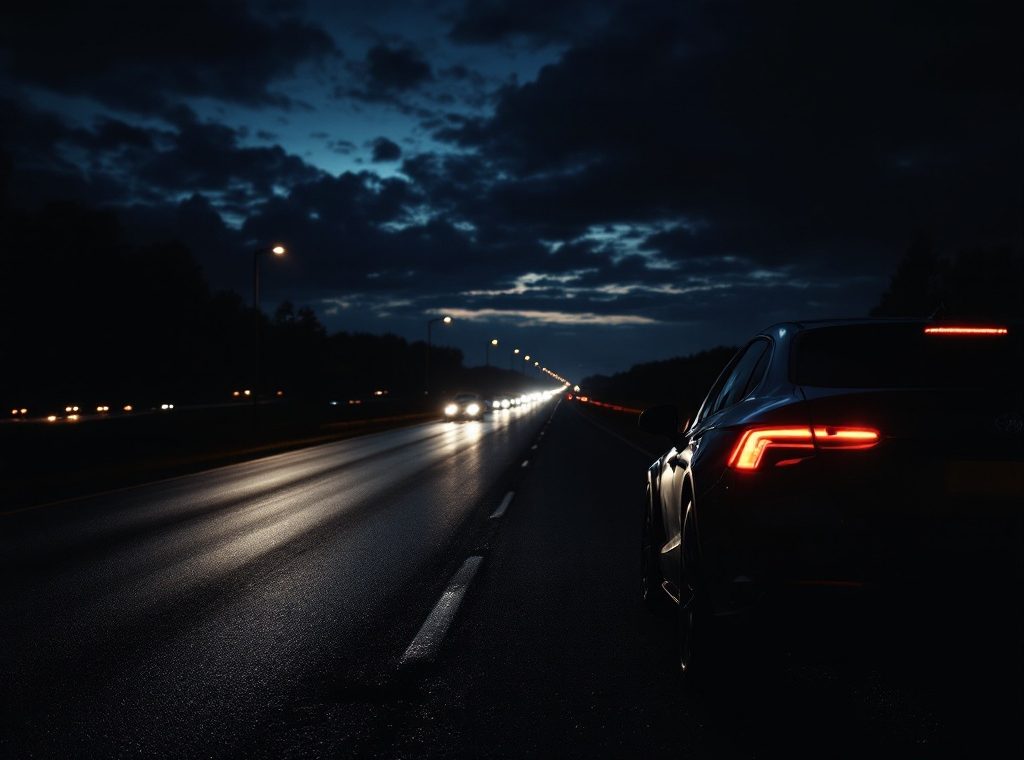Why You Shouldn’t Start a Road Trip Late in the Night: Main Reasons
Planning a late-night road trip? Think again. Driving after dark dramatically increases your risk of accidents due to impaired visibility, making it harder to see hazards and react quickly. The NHTSA reports a threefold increase in fatal crashes at night. Furthermore, fatigue, a major danger comparable to drunk driving, becomes more prevalent, slowing reaction times and clouding judgment. Don’t gamble with your safety. Read on to discover why starting your journey later could have serious consequences and learn essential tips for safer travels.
Important information

- Driver fatigue is a major risk, impairing reaction time and decision-making similar to alcohol.
- Reduced visibility at night makes it harder to see hazards, leading to more accidents.
- There’s a greater chance of encountering impaired drivers at night.
- Wildlife-vehicle collisions are more likely at night due to increased animal activity and reduced visibility.
- Access to emergency services is often limited at night, making breakdowns or accidents more problematic.
Why You Shouldn’t Start a Road Trip Late in the Night: Main Reasons
Driving at night, especially on long trips, significantly increases the risk of driver fatigue. Fatigue impairs reaction time and decision-making, similar to the effects of alcohol. Reduced visibility at night makes it harder to see obstacles, pedestrians, and animals, leading to a higher number of fatal crashes, as reported by the NHTSA. The danger is further amplified by the greater chance of encountering impaired drivers after dark. In addition, limited access to emergency services in remote areas at night can be a serious issue if a breakdown or accident occurs.
Increased Risk of Driver Fatigue
Drowsy driving is a serious hazard, comparable to driving under the influence of alcohol. Tired drivers are three times more likely to be involved in a crash because fatigue slows reaction time, diminishes focus, and impairs judgment. Avoid driving when tired to ensure your safety.
Dangers of Drowsy Driving
Drowsy driving is as dangerous as drunk driving. It slows reaction time, impairs judgment, and hinders decision-making. The risk of microsleeps, brief periods of unconsciousness, increases significantly, becoming potentially fatal at high speeds. Fatigue also dulls reflexes and reduces attention to the road. Don’t drive drowsy.
Health Impacts of Sleep Deprivation
Late-night drives often lead to sleep deprivation, which can significantly impact your health. A disrupted sleep cycle increases the risk of chronic conditions like heart disease and diabetes. Furthermore, a lack of sleep hinders cognitive function, reducing alertness and reaction time. This can affect your mood, making you feel irritable and stressed. Therefore, prioritize sleep for both your well-being and safer journeys.
Disruption of Natural Sleep-Wake Cycles
Driving when tired can be just as dangerous as driving under the influence of alcohol. A study published in “Sleep” shows that sleep deprivation significantly impairs driving ability. Loss of sleep, especially after a late-night road trip, affects alertness and reaction time, making driving hazardous. Disrupted sleep patterns reduce brain function and increase daytime drowsiness, heightening the risks associated with driving. Avoid driving when tired to ensure your safety and the safety of others.
Reduced Visibility and Its Consequences
Driving at night significantly increases danger on the road. Limited headlight range restricts visibility, making hazards like pedestrians, animals, and debris difficult to spot. The National Highway Traffic Safety Administration (NHTSA) reports a threefold increase in fatal crashes at night, primarily due to this reduced visibility. Judging distances becomes challenging in darkness. The AAA Foundation for Traffic Safety identifies limited visibility as a major contributor to nighttime accidents. Oncoming headlight glare further compounds the problem, temporarily blinding drivers. The heightened danger of night driving stems from the pervasive lack of visibility.
Encountering Impaired Drivers
Driving after dark increases your risk of encountering impaired drivers. Many people consume alcohol or drugs in the evening, making them unpredictable, distracted, or slow to react. This heightened risk makes nighttime driving particularly hazardous, so exercise additional caution.
Increased Likelihood of Wildlife-Vehicle Collisions
Driving at night increases the risk of wildlife-vehicle collisions because many animals are most active then. Dawn and dusk are also high-risk periods, as animals like deer are often on the move. Reduced visibility further compounds the danger at night. Therefore, drivers should exercise increased caution during these times.
Importance of Defensive Driving at Night
Driving at night demands extra care due to reduced visibility. Maintain a safe following distance to allow ample reaction time. Be aware of potential hazards such as animals on the road. Utilize high beams to enhance visibility, but dim them for oncoming traffic. Exercise caution, as other drivers might be tired or impaired. Stay focused and alert for a safer night driving experience.
Increase your following distance. This gives you more time to react to unexpected situations.
Use your high beams when possible. They significantly improve your visibility, but remember to dim them for oncoming cars.
Watch out for animals. Nocturnal animals are more active at night and may cross the road unexpectedly.
Be prepared for other drivers’ unpredictable behavior. Some drivers may be drowsy or driving under the influence, especially at night.
Stay alert and focused. Driving at night requires more concentration due to reduced visibility and potential hazards.
Limited Access to Emergency Services
Finding assistance after dark can be a real struggle. Many services, including roadside assistance and medical care, become scarce, turning minor issues into major headaches.
Heightened Stress and Anxiety Levels
Nighttime driving presents increased dangers due to reduced visibility and heightened risk. These factors can impair decision-making and slow reaction times. Fatigue also poses a serious hazard in the dark. These combined dangers significantly elevate the risks associated with driving at night.









